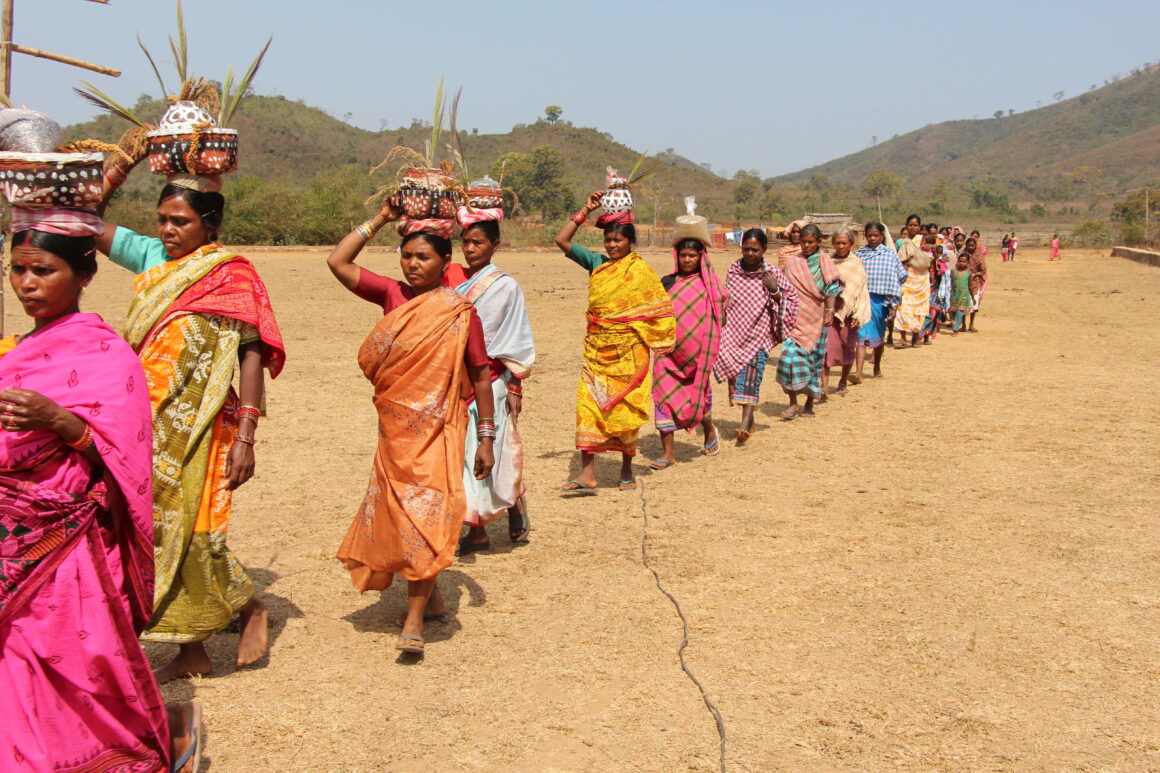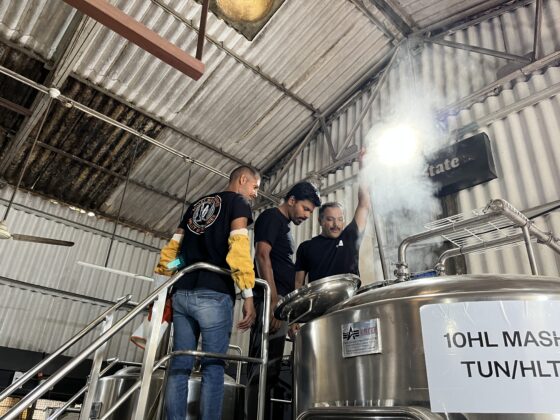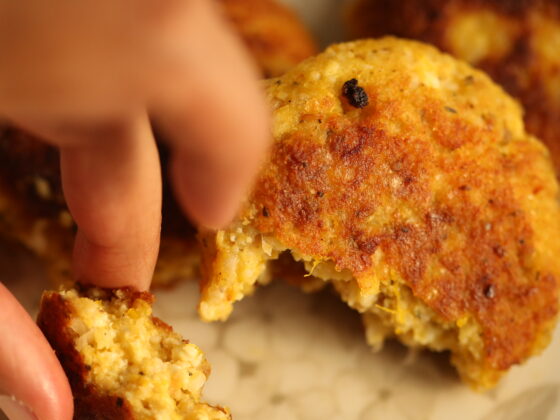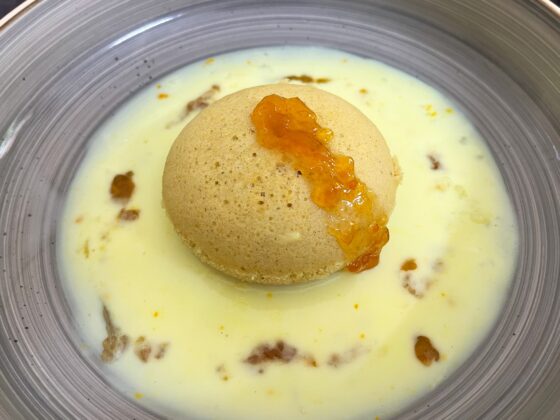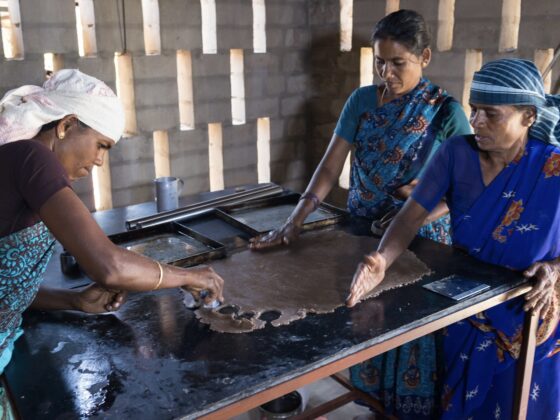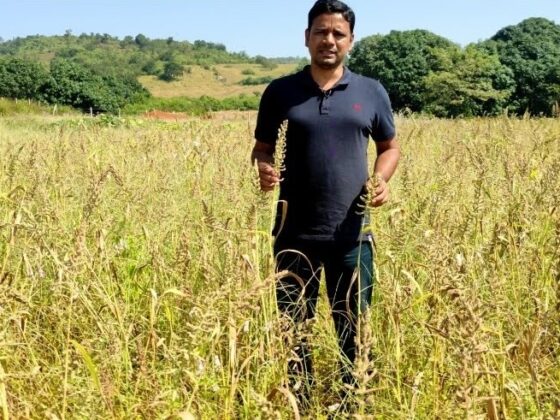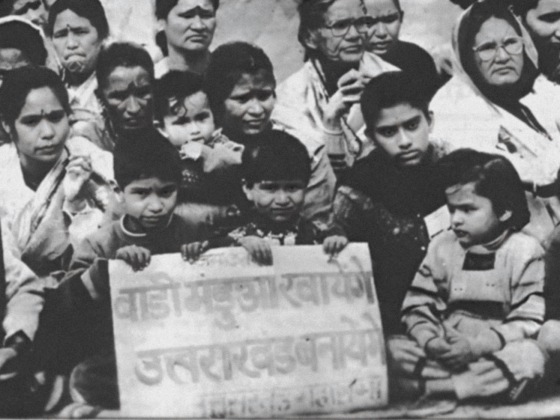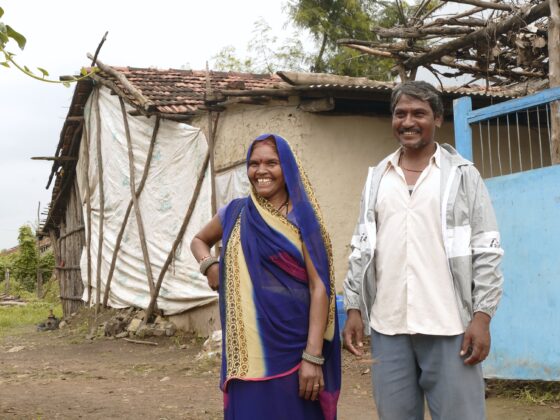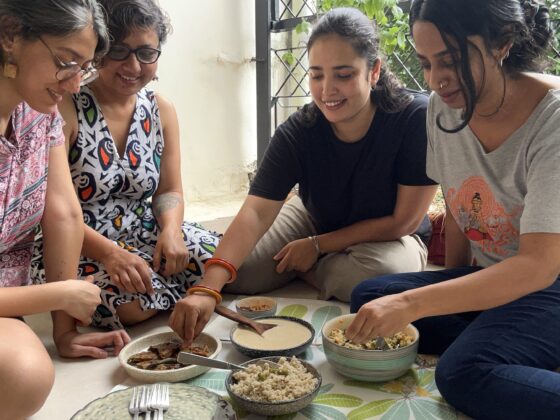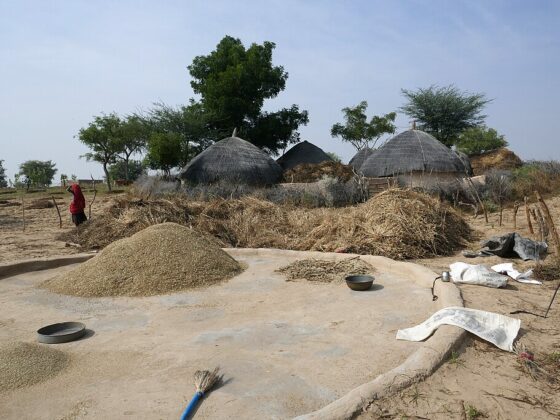Certain food memories linger in a community’s collective consciousness long after the food itself may have disappeared from people’s plates and farmers’ fields. Sohel Sarkar writes on the farming songs and rituals that have sustained millets in different parts of India.
O! Something has entered our hearts
Something has entered our souls
The weed of Jarelai,
The weed of Jarengam
We will clear them by the hundreds
We will clear them by the thousands.
These words are from a weeding song of the War Jañtia community in the Syndai Lyngkot village of Meghalaya. Known locally as Long-Hai, it was historically sung by women while working on fields of krai (millets) before they were taken over by the more profitable kwai (betel nut) plantations. Over time, as krai disappeared from the land, Long-Hai faded from women’s memories as well.
When documentary filmmaker Tarun Bhartiya and environmentalist HH Mohrmen travelled to Syndai in the mid-2010s to record this vanishing community tradition, the song had not been sung for nearly 60 years. Their documentary Kings Have Their Resorts/People Have Their Songs follows the older women of the village over many months as they slowly, and collectively, recall the long-forgotten words. Every time the women congregate in one place, they sing fragments of the song to each other, and when one person’s memory fails, others fill in the gaps based on their own recollection. In this way, phrase by phrase, the song eventually comes alive.
Their rememorisation of Long-Hai is a reminder that certain food memories linger in a community’s collective consciousness long after the food itself may have disappeared from people’s plates and farmers’ fields. Anthropologist Virginia Nazarea calls this a “cultural memory embedded in food and place”. It’s a memory that may be personal, but is also social and collective, passed down from one generation to another through oral traditions of songs, ceremonies, rituals, beliefs, and daily food practices.
Among indigenous and agrarian communities the world over, cultural memory can and has played a huge role in nurturing agrobiodiversity, Nazarea observes. The awareness of the nutritive or healing power of a plant, the knowledge that a crop sustained their ancestors for generations, the observed cultural or ritual significance of a grain, or a remembered and longed-for flavour or aroma leads communities to keep growing certain plants “no matter how unwise, unprofitable, or inconvenient”, she writes.
In India, millets had long been relegated to this status of an “unwise, unprofitable, or inconvenient” crop. When the Green Revolution of the 1960s and ’70s lured farmers towards hybrid paddy and wheat with the promise of high yield and high incomes, it inadvertently left many staple crops, including millets, by the wayside. The country’s public distribution system, which provides free or subsidised grains to poorer households, also excluded millets until recently, further cementing its ‘orphan crop’ status.
Before the state-led and national millet missions in the 2010s as well as the ongoing International Year of Millets started bringing it back into mainstream culinary and dietary consciousness, the hardy and nutritive crop, as well as the indigenous seeds and agroecological farming practices attached to it, remained devalued and ignored. Yet, even as millets receded from commercial fields, the grains stayed put in the collective remembrance of India’s millet-growing communities. The memory of ragi-harvesting songs, the remembered aroma of bajra kheer, or folk ceremonies that call for ritual offering of jowar ensured that the grain was neither fully abandoned nor forgotten.
The songs that brought millets home

When researchers and musicians Charul Bharwada and Vinay Mahajan travelled through Rajasthan, Gujarat, and Himachal Pradesh in an attempt to recover fading farm songs, they encountered millets in many of them. “Especially in Rajasthan and Gujarat, indigenous communities still retain their traditional cropping patterns which are substantially millet based,” Mahajan explains. And it is mostly the older generations, and in many places, only women, who remember the songs attached to these farming practices, he adds. Along with Bharwada, Mahajan documented these songs in a book titled Meeting Millets, which offers a window into the everyday lives, hopes, and trials of farming communities.
In a song from Devgadh Baria in Gujarat, a woman realises that she has forgotten the seeds she had meant to sow at home, and asks the ploughman to halt his plough while she gets them. In a nod to the polyculture systems traditionally followed by small farmers in India, each verse progressively adds names of the seeds she wants to plant: local millets like bajra, banti, bavta, kodra, and juvar as well as pigeon pea, lentils, beans, maize, paddy, okra, and sesame.
In another from Kangra, Himachal, a daughter recounts completing a farming cycle with her mother, explaining why they grow “warm” bajra with “cool” nagarvel (betel), and the chapatis they make by mixing and grinding bajra grains and nagarvel seeds together. In Dungarpur, Rajasthan, a rain-call song likens the drought to a thief who has stolen lightning, clouds, rain, and grains of ragi, bajri, and kuri, while another Himachali song agonises over the difficulties of grinding hard-coated millets and the treacherous paths that lead to the flour mills.
Flour mills may have replaced the manual ragi-grinding stones for many decades now, but ragi-grinding songs are not entirely forgotten. During his ethnographic research in Ramanagara district of Karnataka, researcher Sandip Hazareesingh found that older women would spontaneously break into these songs, often joined by children who’d picked up the words simply by being around. At times, these songs have little to do with millets or their grinding; they may, for instance, recall an imminent flood and the need to appease the water goddess.
In times of drought the lake is filled
The embankment has a fathom of water flowing, brother.
But the embodied memory of singing these verses while sitting in groups and grinding ragi until the wee hours of the morning means that they still evoke the aroma of freshly-ground millets just as much as they summon environmental anxieties.
In Dungarpur, Rajasthan, a rain-call song likens the drought to a thief who has stolen lightning, clouds, rain, and grains of ragi, bajri, and kuri, while another Himachali song agonises over the difficulties of grinding hard-coated millets and the treacherous paths that lead to the flour mills.

Because of their wide repertoire, farm songs can serve as guideposts for communities to reacquaint themselves with the past. When the North East Slow Food & Agrobiodiversity Society (NESFAS) began repopularising Meghalaya’s once staple crop in the 2010s, it also revived the traditional millet threshing festival Bom Krai. “When we started, only two families were cultivating millets in the village of Nongtraw, and for five years, we taught children and young people various threshing songs they had not heard before,” says Pius Ranee, executive director of NESFAS.
These songs are interspersed at various stages of the festival, which starts with community elders deciding the time of the harvest, and inviting neighbouring clans to join in. After the collective harvest, the millet sheaves are smoked with a local wood to enhance the flavour of the grain, threshed with sticks in a practice known as “pduh krai” or “beat the millet”, and stamped on to separate the seeds, Ranee explains. Each of these steps is accompanied by a specific verse:
Ngi ia bom te ia u krai (We are pounding the millet)
Ban dup pahuh ka bam kyrhai (In order to get plenty of food)
Finally, the grains are dehusked by pouring them from a height, allowing the force of the wind to separate the outer shell. The accompanying verses here invoke the power of the wind:
Video courtesy of Alethea Kordor Lyngdoh from NESFAS.
Ko lyer wan uba beit wan uba biang (Oh wind blow with sheer power)
Ban ioh pynkhuid ia une u krai (To clean this millet)
The rituals and dishes that kept millets growing
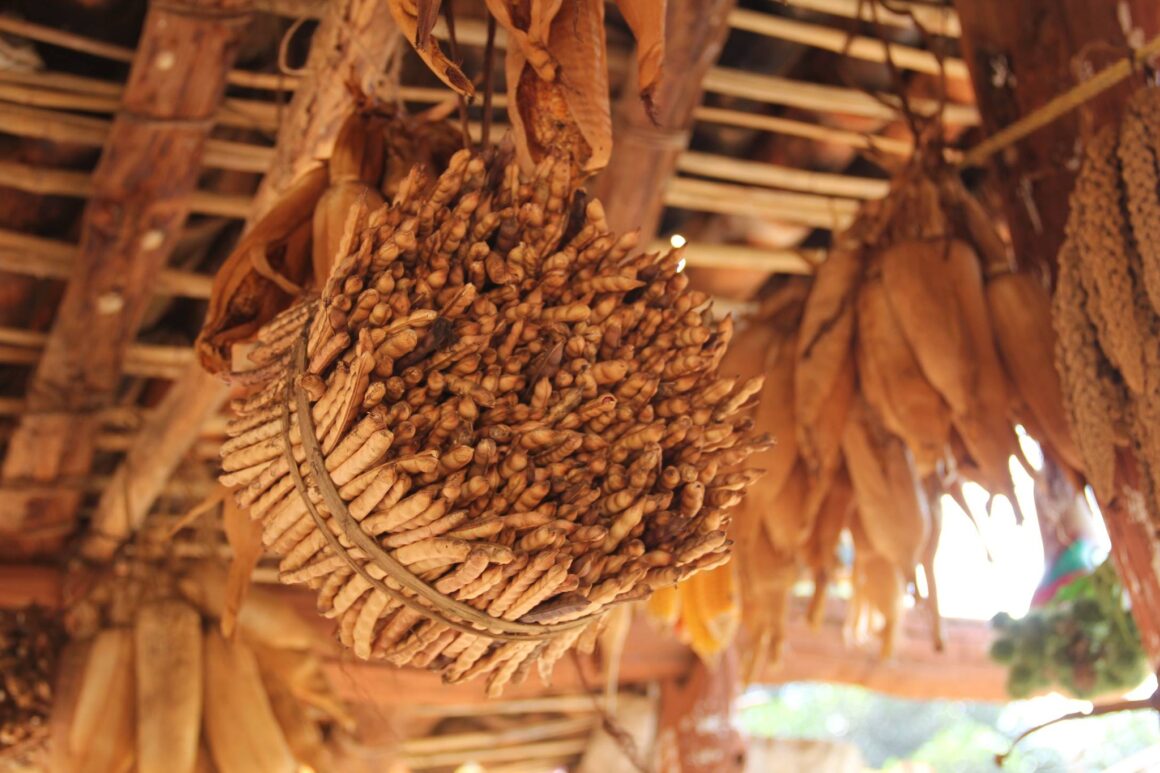
While these songs document the highly specific rituals that accompany every stage of the life cycle of millets, the rituals themselves are testament to the agro-ecological resilience and nutritional security that undergird traditional farming systems. In Karnataka, Koorge puja, offered to the local female deity in hopes of reaping a bountiful harvest, marks the start of the sowing season. The sowing initiation performed as part of the ceremony, in which one woman sows the millet seeds collected in the folds of her sari while two others follow with pigeon pea, is a nod to the wisdom of growing millets with nitrogen-fixing pulses.
During the Gatlu Koorchovadam festival in the Medak district of Andhra Pradesh, women farmers plant seeds of the five most important winter crops in soil taken from the same plot. Later, they compare each other’s germinated seeds and share the healthiest ones among themselves for sowing. “Millet farmers still use these germination testing practices to determine whether their seeds are of good quality, and if they will germinate or not”, explains Sakshee Jamini, district project coordinator with Hyderabad-based policy and research organisation WASSAN. But the ritual also highlights farming as a collective activity as members of a community look out for each other.
Other harvest rituals emphasise the quotidian presence of millets in the lives of agrarian communities. During Atukula Panduga observed by the Gond community of Telangana, local farmers pick jowar panicles from their respective farms, tie them into bunches, and offer them to local deities. In Chhattisgarh, the Pahadi Korwa community hang millet panicles outside their homes to welcome a plentiful harvest. Among the Yimchunger Nagas of Nagaland, the Metumniu festival not only marks a new crop but is also an occasion for the community to clean and repair their homes, roads, waterbodies, and springs, and commemorate departed souls.
Video courtesy of WildFilmsIndia.
Each of these rituals are, in turn, linked with specific foods. “On Makar Sankranti, we make a dish called ghoogri in which bajra is soaked, boiled and mixed with jaggery, and first offered to cattle as a sign of gratitude,” says Sheetal Bhat who has been documenting the foodways of Gujarat for the past eight years. During Nag Panchami in the state, laddoos made from bajra flour, jaggery, and ghee, called kuler, are offered to the snake god, the custodian and protector of farmlands, she adds.
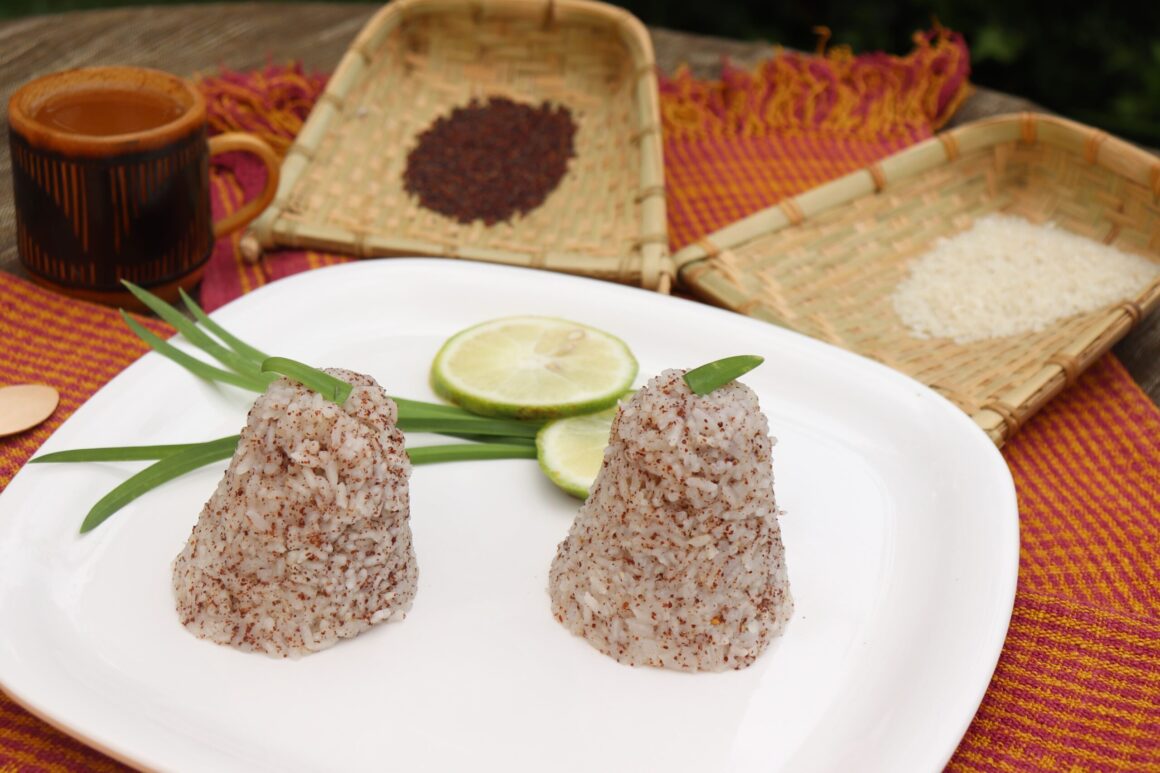
Each of these rituals are, in turn, linked with specific foods. “On Makar Sankranti, we make a dish called ghoogri in which bajra is soaked, boiled and mixed with jaggery, and first offered to cattle as a sign of gratitude.”
Jakrai, a rice cooked with millet, is served with a fermented fish chutney called ktung to mark Bom Krai. During Nuakhai in Odisha, which marks the first millet harvest of the year, a kheer is made from the freshly harvested foxtail millet and little millet. Many millet-based dishes are fasting foods. Others, such as the bajra kheer distributed to neighbours on Holi after the birth of a child in Rajasthan, mark rites of passage.
Certain millet-based foods continue to be part of daily cuisine. In Koraput in Odisha, people still start their days with mandia jau, a ragi porridge, while mandia ruti (flatbread) sustains them during farm work. Bhat points out that in many parts of Gujarat, including in the urban areas, elders still want bhedku—a mix of bajra and moong dal coarsely ground and cooked in buttermilk or water—for breakfast. Others prefer thick bajra or jowar rotlas, or flatbreads called debras, made with bajra flour, methi, and a little wheat flour.
Not surprisingly, the culinary memory of millets dwells often, though not always, on the absences—of missing dishes, flavours, and aromas. In Hazareesingh’s study, women recall “fragrant millet rice dishes prepared from arka (kodo millet), saame (little millet), and navne (foxtail millet)”. Others remember the aroma of foxtail millet kheer or payasam made with the first milk of cows along with ground coconut, jaggery, and cardamom. While stone-ground ragi reminds some of the hard labour of processing millets, for others, its substitution with mill-ground flour has meant the loss of the familiar texture and taste of ragi mudde.
If these ‘edible memories’ are anything to go by, for communities that historically grew them, millets were not simply about subsistence, but rather infused with the pleasure of cooking and eating. Amid the onslaught of monocultures, it is precisely such memories that motivate marginal farmers, in particular, to preserve comfort foods or foods steeped in “cultural significance and emotional attachment”, Nazarea writes. When profitable plants take over commercial fields, the older and familiar crops are squeezed into their borders or the backyard of farmers’ homes for their own consumption. In the process, farmers also hold on to native seeds and traditional seed exchange networks, the starting point of biodiversity conservation.
The seeds that kept millets alive

Not surprisingly, the culinary memory of millets dwells often, though not always, on the absences—of missing dishes, flavours, and aromas.
In the early 2010s, when Nirman began to revive millets among the indigenous Kutia Kondh people in the Kandhamal district of Odisha, older farmers, many of them in faraway districts, provided the seeds, sharing them freely because of existing local traditions of seed exchange, says Prashant Mohanty, a founding member and executive director of the grassroots non profit.
As their traditional custodians, women share a particularly intimate relationship with native millet seeds. Among the Kutia Kondhs, for instance, ‘seed mothers’ (bihana maa) are responsible for identifying, collecting, and conserving heritage seeds, and guiding farmers to use them. Odisha’s Burlang Jatra is a seed conservation festival—burlang in the local dialect is a bamboo basket in which seeds are preserved — where farmers not only display and exchange heirloom varieties of millet seeds, but also share the knowledge of how to preserve, sow, and harvest them with the rest of the community.
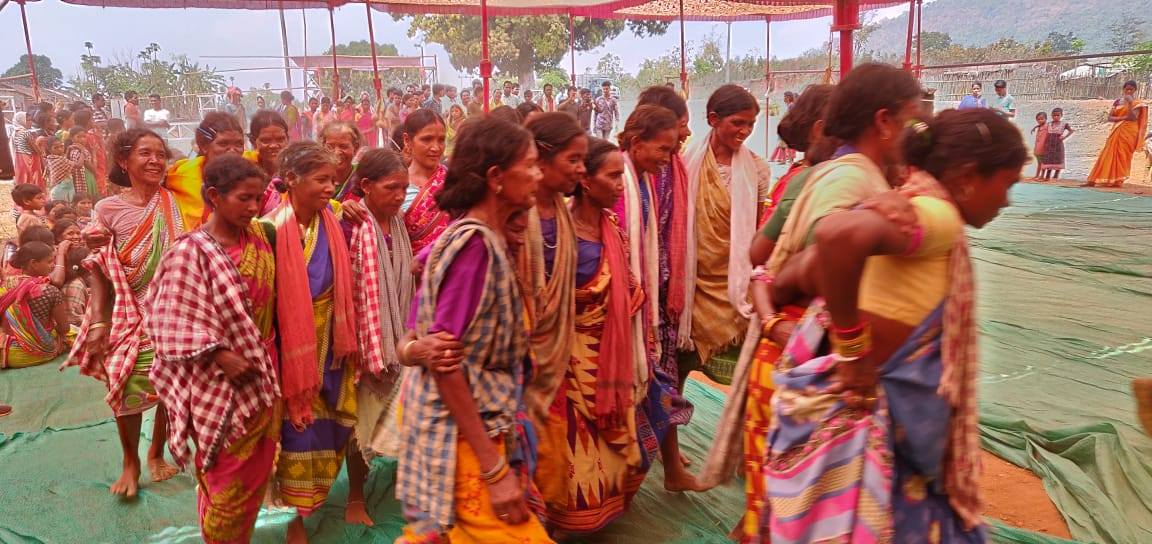
During the festival, it’s women who carry the seeds to the host farmer’s house or the host village where the seeds are collectively worshipped and displayed, and a female priest presides over the seed exchange ceremony, affirming “the spiritual ‘value’ of seeds as a ‘gift’ from Earth-Goddess (Dharni Penu)”. Such rituals ensured that at least a few varieties of local seeds survived in each district along with the knowledge of how to grow them.
“…we can’t meaningfully proceed with healing, with restoration, without “re-story-ation.” In other words, our relationship with land cannot heal until we hear its stories. But who will tell them?” Robin Wall Kimmerer asks in Braiding Sweetgrass. For generations, India’s millet-growing communities have recorded and bequeathed stories of the grain in the form of farm songs, everyday rituals, cooking and eating practices, and knowledge of seed conservation, to say nothing of the presciently conserved heirloom seeds.
When dominant and urban food cultures moved on to aspirational rice and unfamiliar wheat, the strong cultural affinities of indigenous and agrarian communities with millets played a vital role in preserving the grain and safeguarding native varieties from local extinction. While governments, policymakers and even agri research institutes and nonprofits have occupied centre stage in the current resurgence of this ancient and resilient grain, it is these custodians, and their knowledge and practices, that must be centred if the revival is to be sustained in the years to come.
Sohel Sarkar is a Bangalore-based independent journalist, writer and editor covering food, sustainability, gender and culture. Her work has appeared in Feminist Food Journal, Rewilding Magazine, Whetstone Magazine, Sourced Journeys and Eaten Magazine, among others. You can find her on Instagram @sarkar.sohel10.

This article is part of the Millet Revival Project 2023, The Locavore’s modest attempt to demystify cooking with millets, and learn the impact that it has on our ecology. This initiative, in association with Rainmatter Foundation, aims to facilitate the gradual incorporation of millets into our diets, as well as create a space for meaningful conversation and engagement so that we can tap into the resilience of millets while also rediscovering its taste.

Rainmatter Foundation is a non-profit organisation that supports organisations and projects for climate action, a healthier environment, and livelihoods associated with them. The foundation and The Locavore have co-created this Millet Revival Project for a millet-climate outreach campaign for urban consumers. To learn more about the foundation and the other organisations they support, click here.
